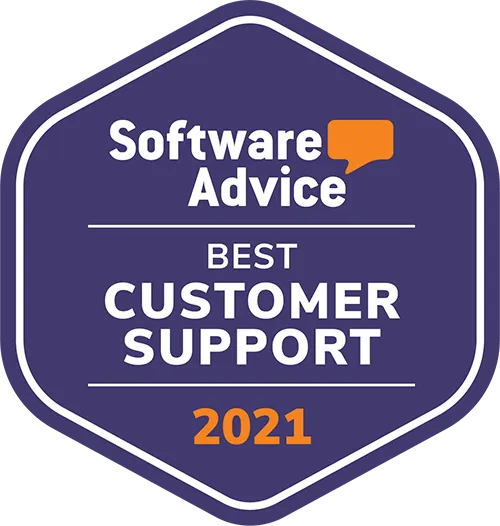It wasn’t a hard choice to select SmartSurvey. Not only did they understand what we were looking to achieve right from the start, they presented a solution that represented everything we needed.
Customer Experience Journey Mapping
Customer Experience Journey Mapping

Customer journey mapping is a key component of creating an effective customer experience management program. Without it, your business will have difficulties understanding customer needs and expectations, anticipating customer issues, and scaling personalisation, to name a few.
To help you get a better understanding of customer experience journey mapping and how you can implement it as part of your overall CXM strategy, in this article, we'll go over:
- How to create a customer journey map – step by step
- The different customer journey touchpoints
- How to leverage those touchpoints to improve customer journey
- Common challenges in journey mapping and touchpoint management
But before we get into any of the above, let's first take a look at what exactly is customer experience journey mapping.
How to create a customer journey map - step by step
Creating a customer journey map can be relatively straightforward - as long as you know the steps that you need to take. But before we show you the steps that you need to take, we'd like to point out that it's perfectly normal for your customer journey map to be different to that of other businesses - even those in your very industry.
The reason being is that there are many unique variables that can affect what your customer journey map will look like, including the type of product or service you sell, whether you do business offline, over the internet, or both, your target demographic, and more.
With that in mind, here are the five steps that you need to take to create the perfect customer journey map.
Step 1: Identify customer personas
The first step in customer journey mapping is identifying who your customers are. Some businesses may be targeting just one customer persona (accountants that only deal with social media influencers) while other businesses can target several different customer personas (such as a software company that serves small businesses, large enterprises, and individual users).
Having an in-depth understanding of your customers will help you better understand their needs and expectations. And with that knowledge, you can then tailor their journey for a more seamless and friction-free customer experience.
Step 2: Break down the customer journey
Before you start mapping the customer journey, you need to break it down. That way, you can better tailor your customer's experience depending on where they are currently at on their journey with your brand. The typical customer journey, regardless of industry, target customer, or product or service, is broken down into five different phases, including:
Awareness: This is when the customer becomes aware of a need or a problem and discovers your product or service as a potential solution.
Consideration: After gaining awareness, the customer evaluates your product or service against alternatives to determine if it's the best fit for their needs.
Purchase: This is the phase when the customer decides to buy your product or service and completes the transaction.
Retention: This phase occurs when a customer continues to come back for your product or service. The goal of this phase is to make the customer come back as many times as possible.
Advocacy: The last phase of a successful customer journey involves the satisfied customer recommending your product or service to others, becoming a brand ambassador and attracting potential new customers to your business.
Step 3: List the different customer touchpoints
Every business has unique customer touchpoints, and your job is to figure out what they are for your particular brand. The phrase ‘customer touchpoints' refers to the various ways your customers can encounter your brand, which could trigger an interaction.
Some examples include online ads, print media, promotions, walking past your physical stores, or the product or service itself. By listing all of the different customer touchpoints, you'll leave no stone unturned, allowing you to see a more clear picture of the customer journey map.
Step 4: Gather data to fill the map
Creating a journey map is all about filling in the details. Once you've broken down the customer journey and have listed down all the touchpoints, the next step is filling in the gaps in the journey map by gathering all the right data.
Some great ways to gather data include carrying out customer and employee surveys, looking at sales and customer service interactions, scouring the web for customer reviews, and more. That way, each touchpoint will be tied to a piece of data, allowing you to measure the impact of your CXM program over the coming months and years.
Step 5: Review and revise
Your customer journey map will never be perfect, and that is largely because the business environment and your customer's needs evolve all the time. So, if you want to keep providing your customers with a great experience and entice them to come back time and time again, you need to continuously review and revise your customer journey map.
Understanding the different customer journey touchpoints
Touchpoints are interactions that your customers have with your business. These interactions can range from simply viewing an advertisement and visiting your website to speaking to customer service, receiving an email, and more.
Having a good grasp of the different customer journey touchpoints and the impact they can have on your business is key. Without this knowledge, you won't know what is important to your customers at that particular touchpoint, resulting in subpar analysis of data and touchpoint optimisation.
Analysing touchpoints
Once you identify the different touchpoints and have started to collect data, the next step is to analyse the data and measure the effectiveness of the touchpoint. Using the said data, you can see how well the touchpoint meets your customer's needs and expectations as well as the impact it's having on your business. Over time, you will also start to see gaps where touchpoints are missing or where opportunities for new touchpoints can be created to further enhance customer experience.
Optimising touchpoints
Once your touchpoints are identified and you have collected a meaningful amount of data, it's time to start thinking about how you can use the data to optimise the touchpoints and improve customer experience.
For example, if you run an online eCommerce store, one major touchpoint that your customers will have with your business is your visiting and navigating through your website. If the collected data indicates a higher-than-usual bounce rate, that can indicate that users are having issues with your website.
Some common reasons why users may be bouncing at a higher-than-average rate include lack of optimisation for mobile devices, slow loading speed, and hard-to-navigate user interface. The correct next step would be fixing all three, collecting more data, and reviewing whether or not the optimisation has had an impact.
Leveraging touchpoints to improve the customer journey
Touchpoints aren't just opportunities where your customers can interact with your brand. They can be used to gather insights and make strategic improvements to the overall customer journey.
For example, using the data from the different touchpoints and keeping track of performance will allow you to see which touchpoints are the most impactful and which are underperforming. This data will help you make more informed decisions, prioritise tasks, and allocate resources.
Leveraging data from the different touchpoints can also help your business become more proactive by anticipating customer needs and resolving potential issues along the customer journey before they arise or start affecting customers at scale.
Challenges in journey mapping and touchpoint management
While customer journey mapping is invaluable, it does come with some challenges. Some of the most common challenges businesses face when it comes to journey mapping and touchpoint management include:
Ensuring consistency across all channels
Larger organisations find it increasingly more difficult to provide customers with a consistent experience across the board (online, in-store, etc). One reason behind this is that businesses often have siloed departments, which hardly collaborate or share information with each other. So, even if one business is doing something particularly well, that isn't necessarily the case with another department as they may not have access to the same information.
One way to solve such inconsistencies is to create unified brand guidelines and train all employees to ensure consistent messaging and service quality across all channels. Then, continue to monitor their performance and provide further training if needed.
Understanding the customer perspective
Many businesses make decisions based on what they think is right - not what their customers think is right. And one reason why businesses do this is because they fail to see things from their customers' perspective.
There are a handful of ways to get in your customers shoes, and obtain invaluable information that will help you tailor the customer journey map. Some proven ways include customer feedback, interviews, and ethnographic research.
Balancing automation and human interaction
It's not a secret that automation technologies can help businesses deal with repetitive and time-consuming tasks far more quickly and efficiently. However, it is important to recognise that automation has its limitations, particularly when it comes to providing a more personalised and empathetic touch that human interaction can offer.
The solution to finding the right balance between the two would be to use automation for routine tasks while ensuring that human support is available for more complex or sensitive interactions.
Wrapping up
Customer journey mapping and effective touchpoint management are crucial for businesses who want to provide customers with a seamless and satisfying experience. By understanding, analysing, optimising customer interactions, you will see major improvements in customer satisfaction, churn rates, brand advocacy, and more.
In today's competitive business environment, staying ahead of the curve and doing your best to not only obtain new customers, but retain the ones that are already buying from you is key to growing a healthier and more sustainable business.
Key takeaways
- Customer journey mapping is a visual representation of every interaction that your customers can have with your brand – from their initial contact with your business to their last purchase.
- Identifying your customer’s persona is crucial for creating a journey map that not only meets but exceeds the needs and expectations of your customers.
- The typical customer journey isn't linear. So, you need to break it down into five phases (awareness, consideration, purchase, retention, and advocacy) and look at each phase individually.
- Touchpoints are key moments when your customers are given the opportunity to interact with your brand. They can be anything from viewing an advertisement on social media to walking past your physical store.
- Collecting and analysing data for each touchpoint is crucial. The information you will obtain as a result will show you the impact the touchpoint is having on customer experience and help you identify areas for improvement.
- Using the data collected from each touchpoint will help your business become more proactive, allowing you to resolve issues before they grow and start to affect your customers at scale.
- There are many challenges in customer journey mapping and touchpoint management, however, if you can get every member of staff on the same page, that alone will have a massive positive impact on customer experience.
How are we different?
UK based
Your data will be stored and processed here in the UK for your peace of mind.
Fanatical support
We pride ourselves on going above and beyond for our customers, providing expert advice and support whenever you need it.
You're in safe hands
Our secure platform and robust data protection measures ensure your data is safe and secure with us. We are ISO27001 and Cyber Essentials Plus certified.
We're human
We understand the importance of personal interaction, which is why we offer a human touch alongside our cutting-edge technology.
Accessibility matters
We're committed to making our surveys accessible to everyone, with a range of features to support those with disabilities.
Unlimited responses
With no limits on the number of responses you can collect, you can be sure your survey will reach as many people as possible without it being cost prohibitive.

Don’t just take our word for it
Over 500,000 users have registered to use SmartSurvey.


We couldn't be happier with SmartSurvey, we love its functionality and flexibility. This means we have been able to use one survey tool across many parts of the business.








Get in touch
We are ISO27001 certified, registered under the Data Protection Act and fully compliant with EU Privacy Laws.
Access to a knowledgeable account manager for personal assistance for when you most need it.
Our friendly design team is on hand to assist with any bespoke design and custom development requests.
We succeed if you succeed. Our goal is to help you carry out effective research and we’re here to help you achieve that.
